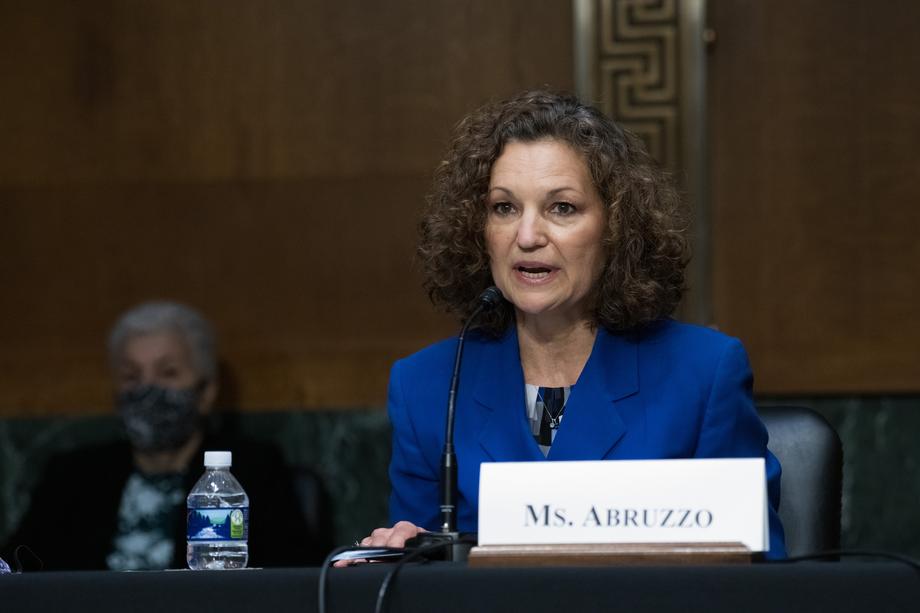US Labor Agency's Top Lawyer Fights Corporate Spying That Discourages Whistleblowers

This article was funded by paid subscribers of The Dissenter Newsletter. Become a monthly paid subscriber to help us continue our coverage of whistleblowers.
The top lawyer for the National Labor Relations Board (NLRB) in the United States has come out strongly against workplace surveillance and management technology that may be used to disrupt union organizing and discourage whistleblower complaints.
Jennifer Abruzzo, who is general counsel for the NLRB, wrote a memo in October that was sent to officials at the agency’s regional offices.
Section 7 of the National Labor Relations Act, which was passed in 1935, protects the “right to self-organization, to form, join, or assist labor organizations, to bargain collectively through representatives of their own choosing, and to engage in other concerted activities for the purpose of collective bargaining or other mutual aid or protection.”
Abruzzo contended [PDF] that the right to union organizing under the law includes protections from “intrusive or abusive electronic monitoring and automated management practices” that interfere with this right.
She effectively recommended that the NLRB “adopt a new framework for protecting employees” from such surveillance that may stop union organizing and other protected activity, such as workplace complaints (including those submitted to the NLRB).
Regional offices were advised to submit “any cases involving intrusive or abusive electronic surveillance and algorithmic management that interferes with the exercise of Section 7 rights” to her in order to help ensure that workplace protections are upheld.
“Modern workplace surveillance in the United States is rooted in a historic distrust of workers, particularly low-wage workers, with racist foundations in slavery and following exploitative labor practices,” according to an August 2021 report from the Washington Center for Equitable Growth.
“The normalization of workplace surveillance weakens worker power by allowing more avenues for companies to justify their anti-union surveillance while also creating a general atmosphere where workers know they are always being watched.”
The report continued, “A 1941 NLRB decision stated that companies cannot conduct out-of-the-ordinary surveillance of unionization activities. Yet invasive surveillance is fast becoming the ‘baseline.’ This means it can be harder for workers to prove that an employer’s actions are specifically related to their unionization activity.”
US employers may use keycards, security cameras, sensors, wearable devices, image-recognition software, and artificial intelligence to spy on workers. They can utilize applications to track key strokes and mouse activity and capture screen shots from a worker’s laptop or mobile device.
Furthermore, the Washington Center noted, “Employers may hire firms to research workers (including their off-work activities), search social media, or use companies that collect background or credit checks.” Workers may be required to submit to such workplace surveillance.
Amazon is a prime example of a corporation that utilizes surveillance to quash union activity. It has cameras equipped with artificial intelligence in the corporation’s delivery vehicles, which requires drivers to “sign forms consenting to collection and use of their biometric data in order to keep their jobs.”
Also from the Washington Center's report:
The company is demanding this personal data via the minute monitoring and management of workers’ everyday actions, despite these delivery workers not being employed by Amazon itself. Instead, they are employed by “delivery service partners,” enabling the tech giant to avoid direct responsibility for drivers’ pay and working conditions and to sidestep more regulated logistics companies such as United Parcel Service Inc. and FedEx Corporation.
Intrusive surveillance of Amazon workers enables the corporation to identify “threats” to the business, like workers organizing to form a union.
As Abruzzo described, “Electronic surveillance and the breakneck pace of work set by automated systems may severely limit or completely prevent employees from engaging in protected conversations about unionization or terms and conditions of employment that are necessary precursor to group action.”
“If the surveillance extends to break times and non-work areas, or if excessive workloads prevent workers from taking their breaks together or at all, they may be unable to engage in solicitation or distribution of union literature during nonworking time."
“And surveillance reaching even beyond the workplace—or the use of technology that makes employees reasonably fear such far-reaching surveillance—may prevent employees from exercising their [union organizing] rights anywhere,” Abruzzo additionally stated.
Workers are not supposed to be fired based on their ethnicity, gender, race, religion, or nationality. The National Labor Relations Act is supposed to protect workers from retaliation for union organizing. But if a corporation like Amazon is constantly spying on their actions, then management has a wealth of data that can be analyzed and weaponized to fire individuals for failing to meet the corporation's demands for “productivity.”
One of the few ways to defend union organizers and workplace whistleblowers, especially more vulnerable low-income individuals, is to enforce federal labor law through what actions the NLRB is empowered to take against abusive and exploitative corporations.

Comments ()